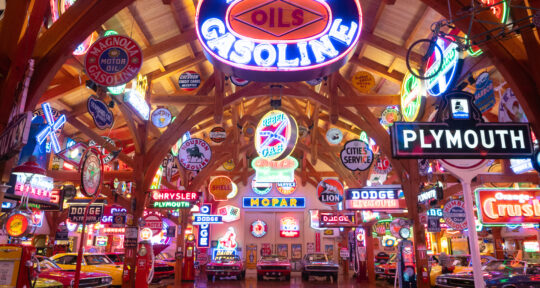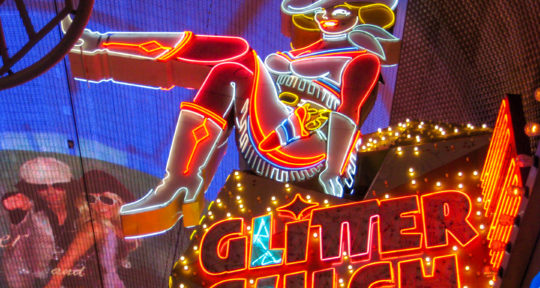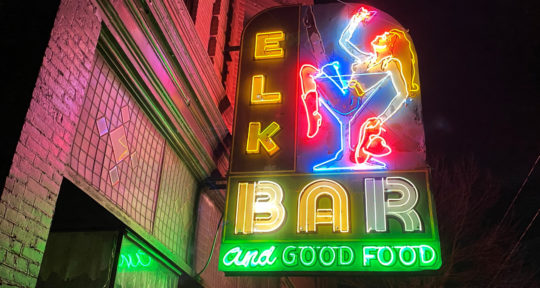As David Benko made his way through an old decrepit building, he knew instantly that he’d found a home for his extensive neon sign collection. Once an Elks Temple, the 20,000-square-foot structure was about to be torn down. After showing the building to hundreds of potential buyers with no luck, Benko says that the real estate agent was taken back with his overwhelming enthusiasm. Though the colonial-style brick building, which dates back to 1910, had seen better days, remnants of its former grandeur were still evident.
“This is beautiful!” Benko remembers saying after stepping into the ballroom, which was full of debris, dead birds, and bats. The agent was skeptical.
Up until then, Benko would never have considered The Dalles—a city in Oregon situated 84 miles east of Portland—as the locale for his nascent neon sign museum. It’s the largest city along the Oregon side of the Columbia River Gorge, a canyon that stretches for more than 80 miles through the Cascade mountain range. One of the oldest settlements on the West Coast, The Dalles has seen a revitalization in recent years with new craft breweries, restaurants, and a restored art deco theater.
So when a friend told Benko about a building in The Dalles that seemed perfect for his neon sign collection, Benko put a piece of paper with the building’s address inside his wallet—and forgot all about it. “I used to stop at The Dalles for gas and coffee,” he says. “That’s it. I didn’t know much about it at the time.” But then he was cleaning out his wallet, found the address, looked it up online, and thought, “Oh man, that’s a cool building.”
The next day, Benko and his wife drove out to The Dalles to see the place for themselves. The crumbling interior was in bad shape, but that didn’t deter Benko; he was already picturing which displays would go where. A development agreement was reached, and after a major remodel, the National Neon Sign Museum opened to the public in 2018.
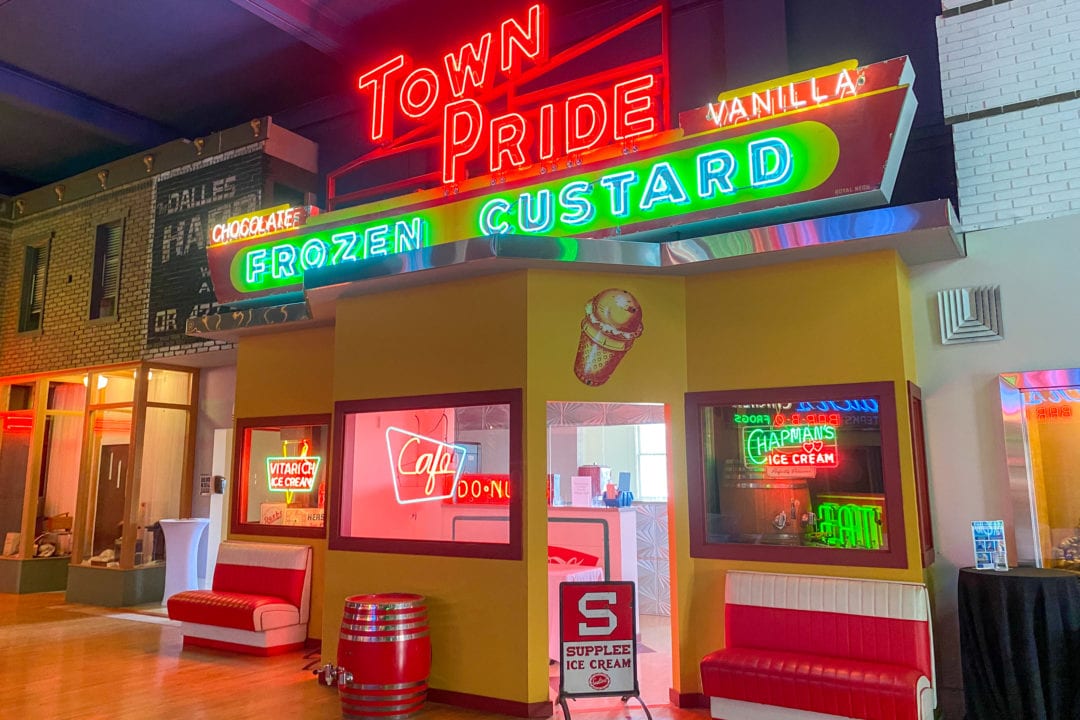
Cross-country adventures and neon lights
The landscape shifts from mossy basalt cliffs to sandy-hued hills as I head toward The Dalles from Portland on I-84 East. The National Neon Sign Museum is just a short drive off the exit and it’s not long before I reach the former Elks Temple. The building is as grandiose as I imagined—a classic brick facade with towering columns supporting the main entrance and a balcony above. Benko greets me at the door. The front lobby, adorned with a neon clock and ticket sign, leads into a small movie theater where visitors can watch a video about how neon signs are made.
Touring the museum’s eclectic exhibits, it’s not hard to see why Benko has dedicated his life to neon. When he was just 8 years old, Benko was already collecting antiques. By the time he reached his teens, he was taking cross-country road trips with friends in search of bigger and brighter relics. He never looked back. “We’d usually take a van and a trailer and pick up anything from early neon clocks, to signs, gas pumps, and jukeboxes, and keep buying and selling,” Benko says. “I always leaned into trying to keep the rare stuff, which has paid off well.”
After studying film in college, Benko still found himself pulled back to neon. In 1988, he did a 6-month apprenticeship under neon sign legend Ron Cole, where he learned how to make and repair signs. He quickly found that bending glass tubes into words has a steep learning curve. “Between burning and cutting yourself, it’s probably the hardest thing I’ve ever done,” says Benko.
Not long after finishing the apprenticeship, Benko started his own business in Everett, Washington, called Rocket City Neon, where he made and repaired signs. The shop, which he moved to Vancouver, eventually became the Rocket City Neon Advertising Museum, his first segue into museum curation. Benko still runs Rocket City Neon, although the advertising museum closed in 2002. He spent several years curating the American Sign Museum in Cincinnati, commuting back and forth from Oregon to Ohio. But Benko had other ambitions. His own collection of neon signs had become rather hefty over the years, and it was time to open his own museum.
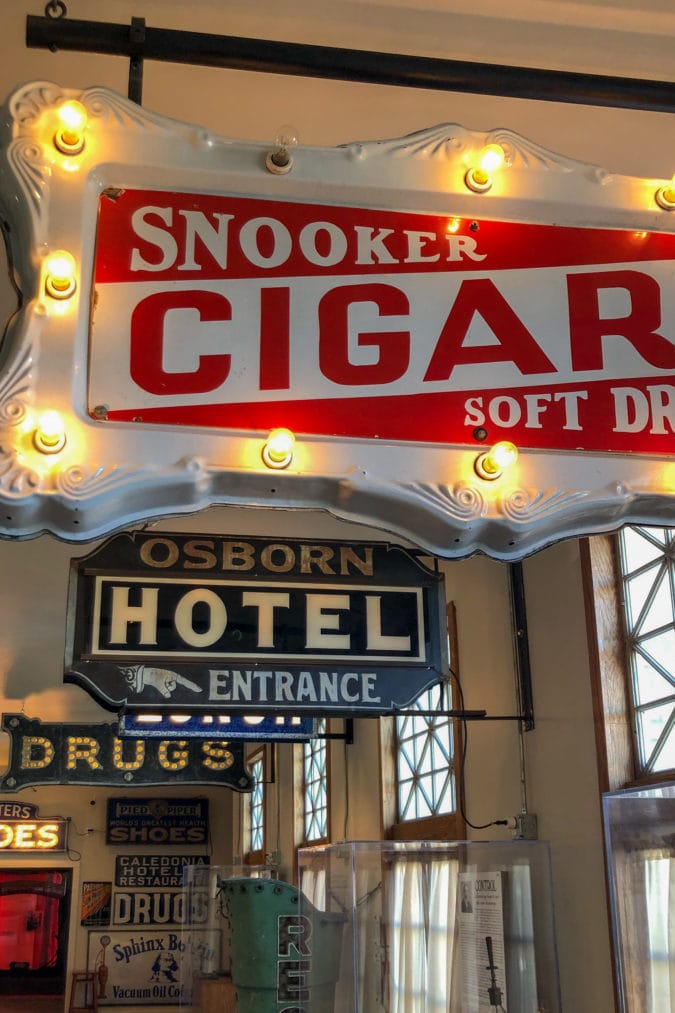
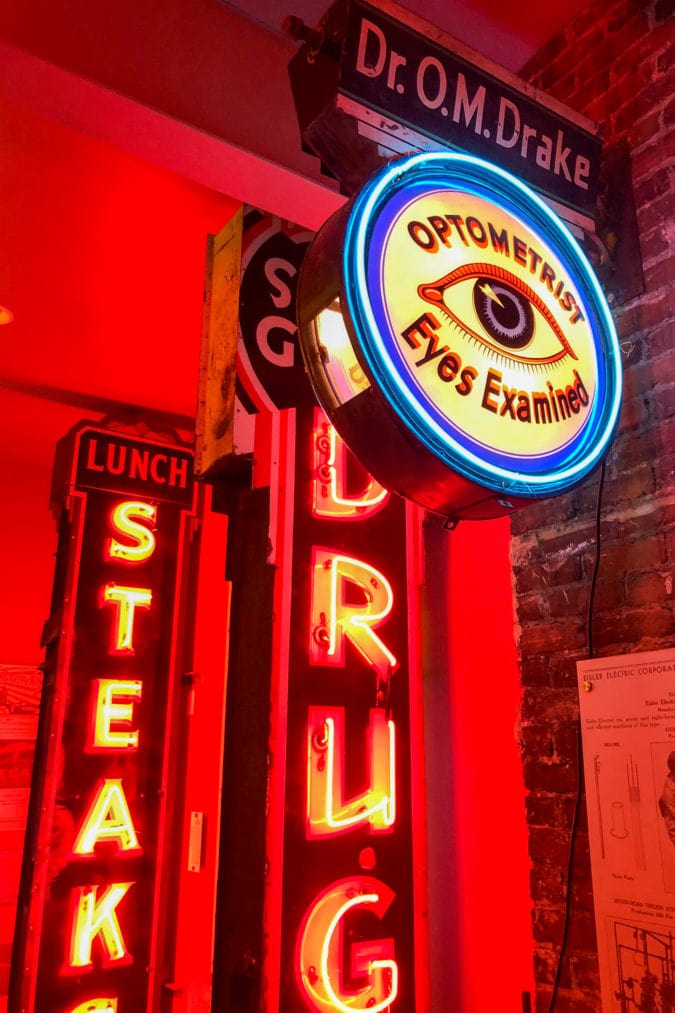
Let there be light
For Benko, the National Neon Sign Museum is not merely a collection of signs. Rather, the carefully curated exhibits tell the story of how neon helped shape culture in the U.S. From pre-electric gold leaf signage to the colorful neon advertising that came decades later, Benko has woven together an assortment of signs, artifacts, and documents that place neon into a larger context.
“You can’t tell the story of the neon sign without acknowledging that from the late 19th to early 20th century, it was the lightbulb that changed the face of commercialism,” says Benko as we tour the first gallery filled with elegant one-word signs lit simply by white bulbs.
“This is the most important room in the building,” he says as we enter a second gallery. Dedicated to Georges Claude, the French physicist who invented neon lighting, the exhibit displays some of the earliest lighted signs from the 1920s and ‘30s. Compared to the flashy neon signs that would come in later decades, the signage here is very tame.
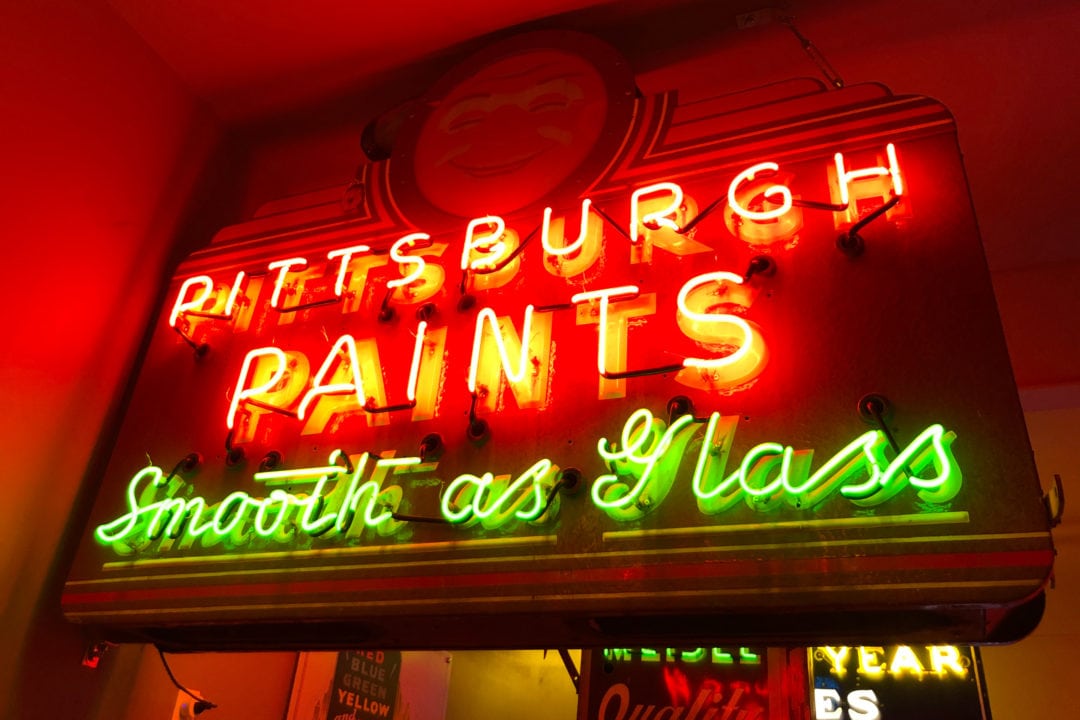
For many, the sight of neon recalls a simpler time, when streets were colorfully illuminated by business signs, gas station logos, and electric clocks. In addition to its role as a clever advertising tool, neon was responsible for some of the most iconic logos of the 20th century—some of which remain familiar today.
“More money was spent during the Depression era on neon signs than any other,” Benko says. “Coca-Cola came out of the Depression as one of the most recognizable logos on earth. And I think almost 100 years later, we can probably say they still are.”
Dizzying displays
As society continued at an ever-changing pace, neon advertising adapted. This is the overall mood, anyway, of the next gallery, where Benko showcases a dizzying display of animated signs, from Pegasus gas to Borden’s Ice Cream. Benko says this transition between galleries is intentional: “I want to show how light evolved from that beautiful, simple first room to the third gallery, where it’s going to be as overwhelming as possible. It kind of shows how human nature evolved, like, ‘bigger is better.’”
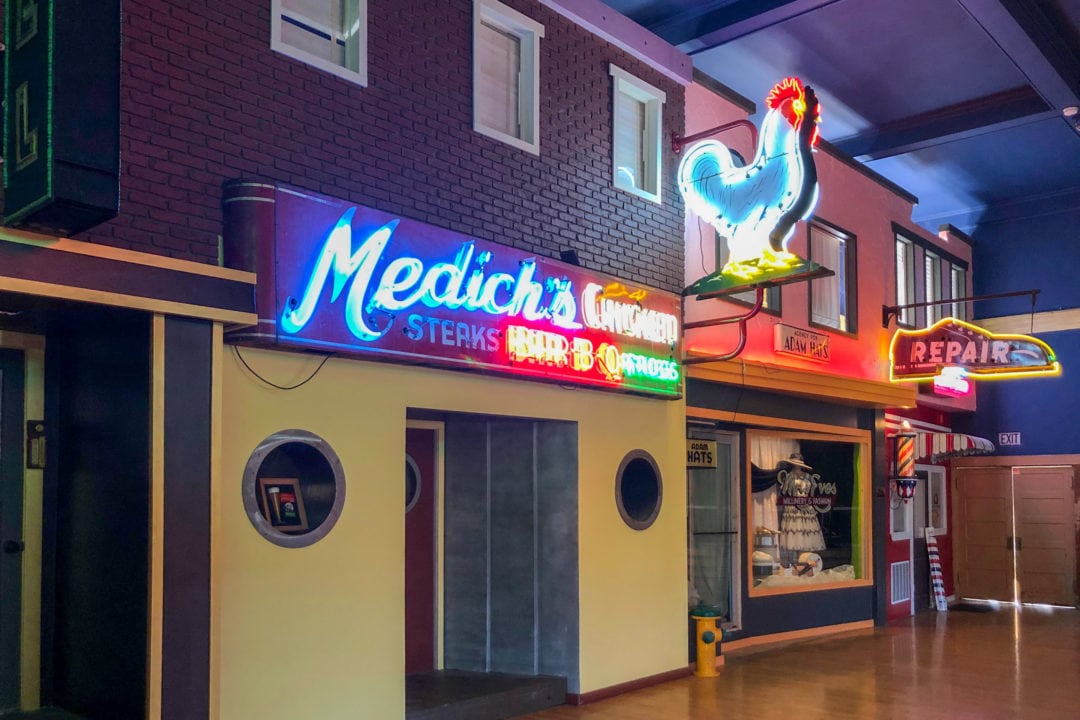
The gallery in the upstairs ballroom is a fun departure from the rest of the museum. Modeled after a 1950s-style town, the room recreates an old-school main street with vintage storefronts and eateries, each lit with its own neon sign. While the signs on display in the museum only represent about 15 percent of Benko’s entire collection, there’s a reason why he’s chosen not to display all of his rarest signs.
“If you know Mobilgas, and you know the Pegasus sign, when you see that, you get very nostalgic for it,” Benko says. “But if I had some of my really rare gas station signs, people probably wouldn’t recognize them. It’s kind of like when you see old cars on the road. Neon signs just bring back emotions for people.”
If you go
The National Neon Sign Museum is open to the general public Thursday through Saturday from 10 a.m. to 5 p.m.

